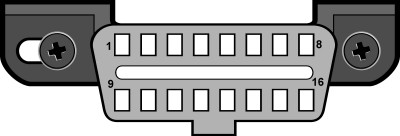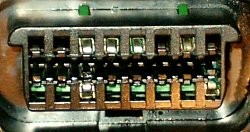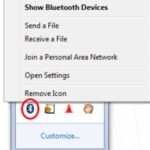Understanding whether your car is OBD2 compliant is crucial for modern vehicle diagnostics and maintenance. OBD2, or On-Board Diagnostics II, is a standardized system that allows you to access your car’s health information using a scan tool. But how can you determine if your vehicle adheres to this standard? This guide will walk you through several methods to easily check your car’s OBD2 compliance, ensuring you can effectively monitor and maintain your vehicle.
Understanding OBD-II Compliance and Why It’s Important
OBD-II compliance became mandatory in many parts of the world to standardize vehicle emissions monitoring and diagnostics. This standardization means that regardless of the car manufacturer, a universal scan tool can be used to read diagnostic trouble codes (DTCs) and access real-time data from the engine and other vehicle systems. Knowing your car is OBD2 compliant opens up a world of possibilities for DIY diagnostics, allowing you to:
- Diagnose Check Engine Light Issues: Understand why your check engine light is on before visiting a mechanic.
- Monitor Vehicle Health: Track parameters like engine temperature, RPM, and fuel efficiency.
- Save on Diagnostic Costs: Perform preliminary checks yourself, potentially saving money on professional diagnostic services.
Quick Checks to See If Your Car is OBD2 Compliant
Determining OBD2 compliance doesn’t have to be complicated. Here are several straightforward ways to check:
1. Check Your Vehicle’s Model Year and Country of Sale
OBD-II implementation was phased in based on the country where the vehicle was originally sold and its model year, not necessarily where it was manufactured. Refer to the table below for general guidelines. It is vital to check the country where your vehicle was initially sold new, as this is the determining factor for OBD-II compliance based on regional regulations.
| Country of Sale | Model Years | Notes |
|---|---|---|
| United States | 1996 | |
| European Union (Diesel) | 2007 and onward | Limited Compliance from 2004-06 |
| European Union(Petrol) | 2002 and onward | Limited Compliance from 2001 |
| Canada | 1998 | |
| Algeria | 2014 | |
| Argentina (Domestic) | 2008 | |
| Argentina (Imports) | 2009 | |
| Australia (Diesel) | 2007 | |
| Australia (Petrol) | 2006 | |
| Bahrain | 2018 and onward | Limited Compliance from 2017-18 |
| Brazil (Petrol) | 2007 and onward | Limited Compliance from 2005-06 |
| Brazil (Diesel) | 2015 and onward | Limited Compliance from 2013-14 |
| Chile (Diesel) | 2013 | |
| Chile (Petrol) | 2014 | |
| China (Beijing – Petrol) | 2008 | |
| China (Country – Diesel) | 2011 | |
| China (Country – Petrol) | 2010 | |
| Costa Rica | 2017 onward | Limited Compliance |
| Hong Kong | 2006 | |
| India | 2017 and onward | Limited Compliance from 2013-16 |
| Iran | 2012 | |
| Israel | 2003 | |
| Japan | 2008 and onward | Limited Compliance from 2003-07 |
| Kuwait | 2018 and onward | Limited Compliance from 2017-18 |
| Mexico | 2007 | |
| Morocco | 2010 | |
| New Zealand (Diesel) | 2007 | |
| New Zealand (Petrol) | 2006 | |
| Nigeria | 2015 | |
| Oman | 2018 and onward | Limited Compliance from 2017-18 |
| Peru | 2003 | |
| Peru | 2017 | |
| Philippines | 2016 | |
| Qatar | 2018 and onward | Limited Compliance from 2017-18 |
| Russia | 2012 and onward | Limited Compliance from 2010-11 |
| Saudi Arabia | 2018 and onward | Limited Compliance from 2017-18 |
| Singapore | 2014 | |
| South Korea | 2010 and onward | Limited Compliance from 2005-09 |
| Taiwan | 2008 | |
| Thailand | 2013 | |
| Turkey | 2013 | |
| United Arab Emirates | 2018 and onward | Limited Compliance from 2017-18 |
| Vietnam | 2017 | |
| Yemen | 2018 and onward | Limited Compliance from 2017-18 |


Important Notes:
- Hybrids and Electric Vehicles: While many modern hybrid and electric vehicles are OBD-II compliant, some may have variations or limitations in diagnostic access. Always consult your vehicle manual or dealer for specifics.
- Limited Compliance: For model years listed as “Limited Compliance,” OBD-II functionality might be restricted to emissions-related diagnostics only. Full OBD-II compliance ensures broader diagnostic capabilities.
2. Locate the OBD-II Port (DLC)
All OBD-II compliant vehicles are equipped with a standardized 16-pin Diagnostic Link Connector (DLC). This port is typically located within 2 feet of the steering wheel, often under the dashboard on the driver’s side.
- Visual Inspection: Look for a trapezoidal, 16-pin connector. It’s usually easily accessible and not hidden behind panels, though the exact placement can vary by manufacturer.
This image shows a typical OBD-II port, also known as a Diagnostic Link Connector (DLC), commonly found under the dashboard of OBD-II compliant vehicles.
However, the presence of a 16-pin DLC does not automatically guarantee OBD-II compliance. Some pre-OBD-II vehicles, particularly from European and Asian manufacturers, also used 16-pin connectors that are not fully OBD-II compliant.
3. Check the Vehicle Emission Control Information Label
Another reliable method is to check the Vehicle Emission Control Information (VECI) label. This label is usually found under the hood, often on the underside of the hood itself or on the radiator support.
- Look for OBD-II Certification: The label on OBD-II compliant vehicles will explicitly state “OBD-II Certified,” “OBD II Compliant,” or similar wording. It might also list specific OBD standards like “OBD II,” “EOBD” (European On-Board Diagnostics), or “JOBD” (Japanese On-Board Diagnostics). These are all variations of the OBD-II standard.
This image displays a Vehicle Emission Control Information Label. Look for phrases like “OBD II Certified” on your vehicle’s label to confirm OBD-II compliance.
4. Consult Your Owner’s Manual
Your vehicle’s owner’s manual is a valuable resource.
- Search for OBD or OBD-II: Look in the index or the section on vehicle specifications or diagnostics for mentions of “OBD,” “OBD-II,” or “On-Board Diagnostics.” The manual should explicitly state if your vehicle is OBD-II compliant.
Beyond the Basics: Understanding Connector Types
While most OBD-II compliant vehicles use the standard 16-pin DLC, it’s worth noting subtle differences. As mentioned earlier, some non-OBD-II compliant vehicles also used 16-pin connectors. These might have slight variations, such as the “ears” seen on some non-EOBD compliant Ford models.
While visually inspecting the connector might offer clues, the methods described above (model year, VECI label, owner’s manual) are more definitive in confirming OBD-II compliance.
What If My Car Isn’t OBD-II Compliant?
If your vehicle predates OBD-II standardization or is not compliant for other reasons, using a generic OBD-II scan tool will not work. You may need:
- Manufacturer-Specific Tools: Older or non-compliant vehicles often require proprietary diagnostic tools from the vehicle manufacturer or specialized garages equipped to handle pre-OBD-II systems.
- Limited Diagnostic Access: Diagnostic capabilities on non-OBD-II vehicles are typically more limited and may not offer the same level of detailed information as OBD-II systems.
Conclusion
Determining if your car is OBD2 compliant is usually straightforward. By checking your vehicle’s model year against the country of sale guidelines, inspecting for the OBD-II port, examining the VECI label, and consulting your owner’s manual, you can confidently ascertain compatibility. This knowledge empowers you to take advantage of OBD-II diagnostics for better vehicle maintenance and understanding.
